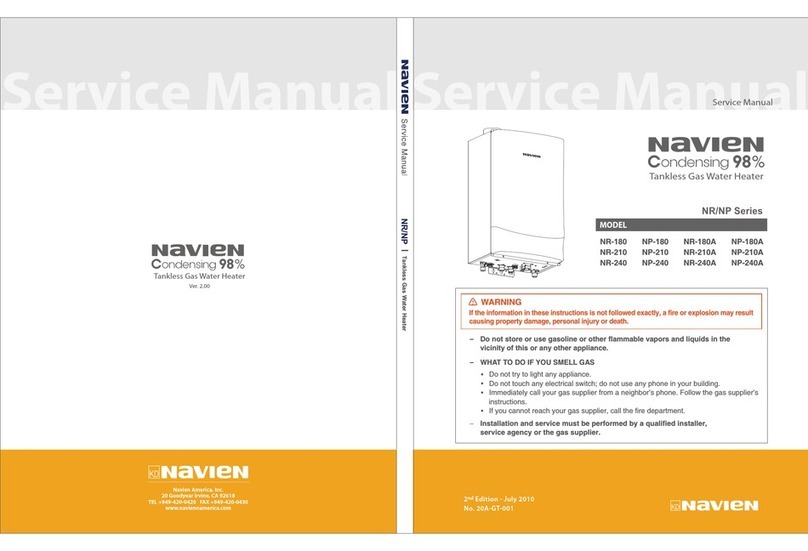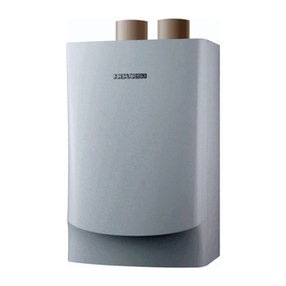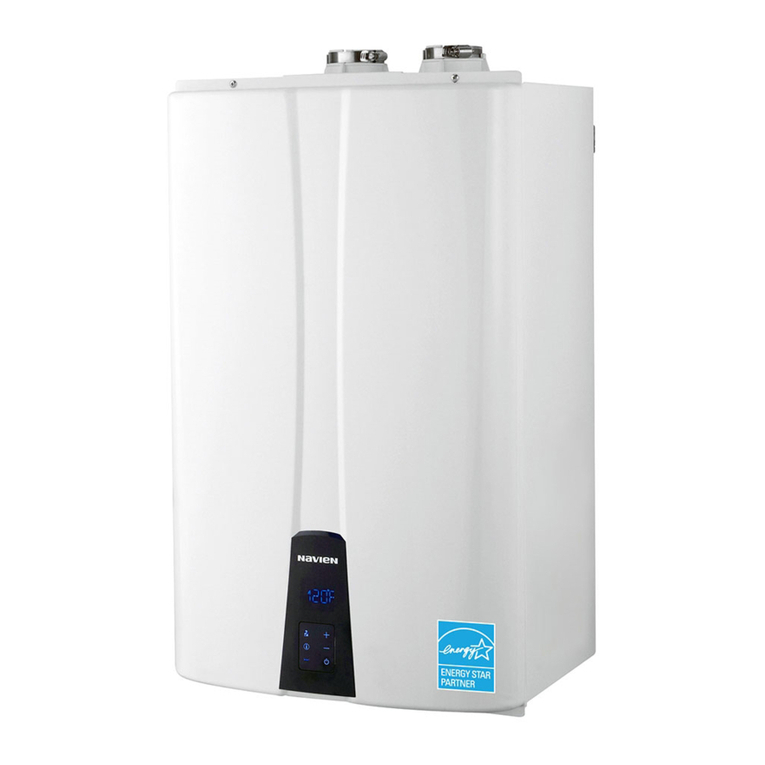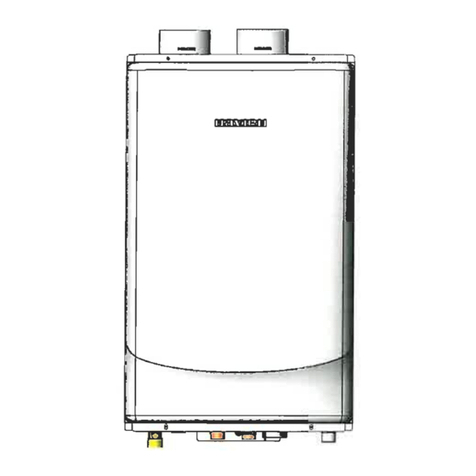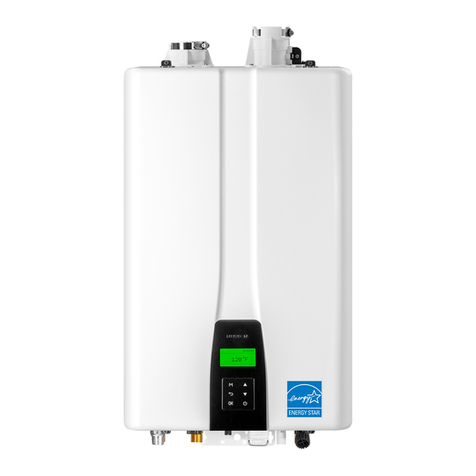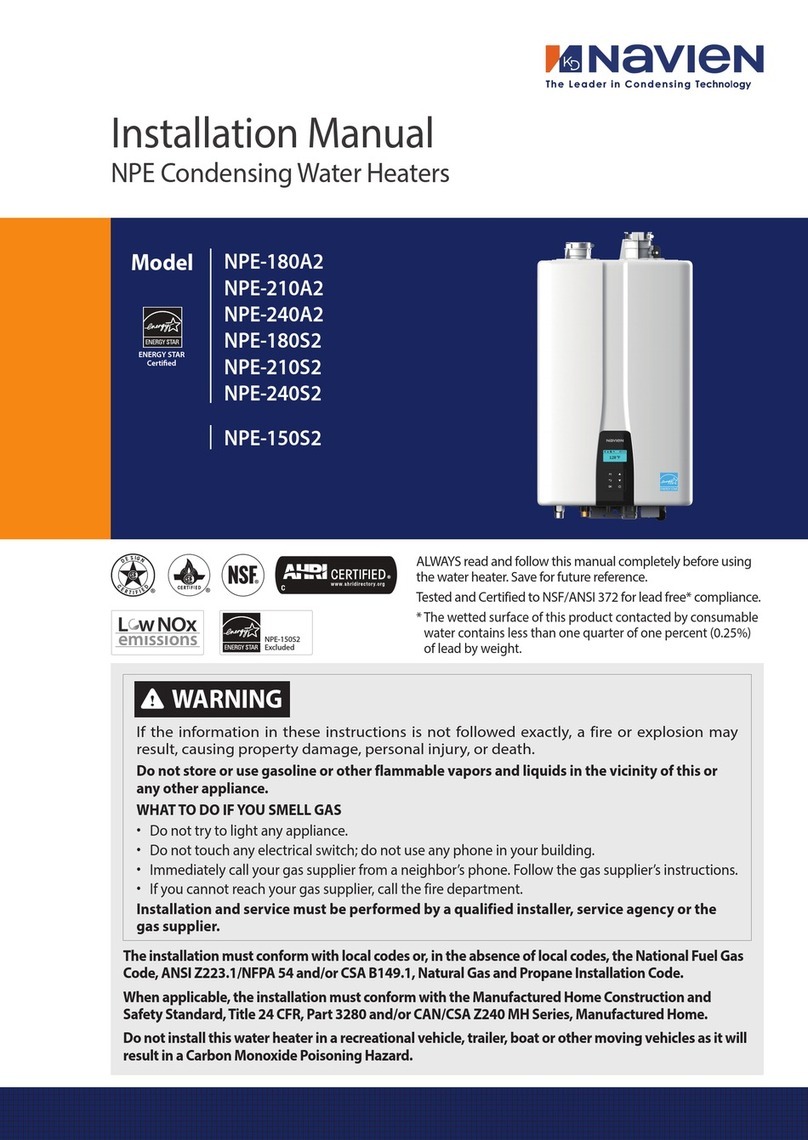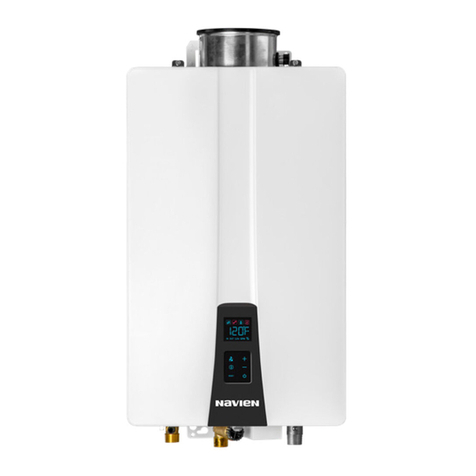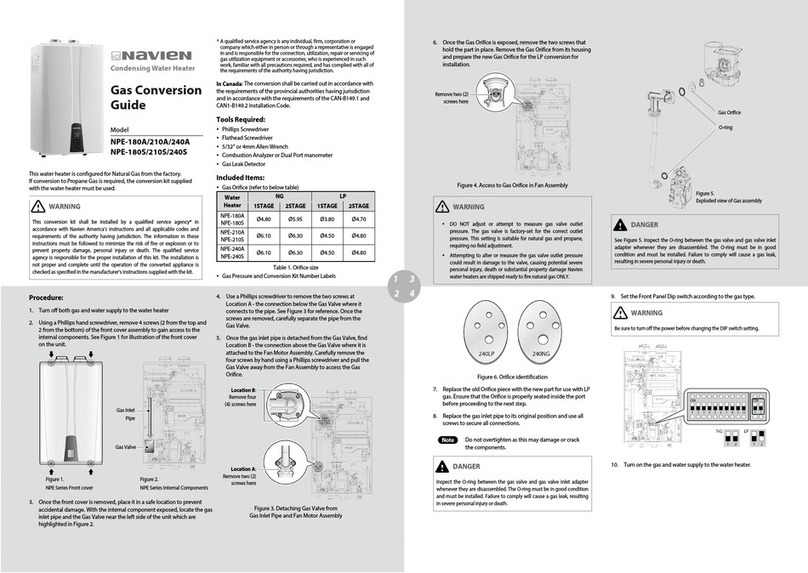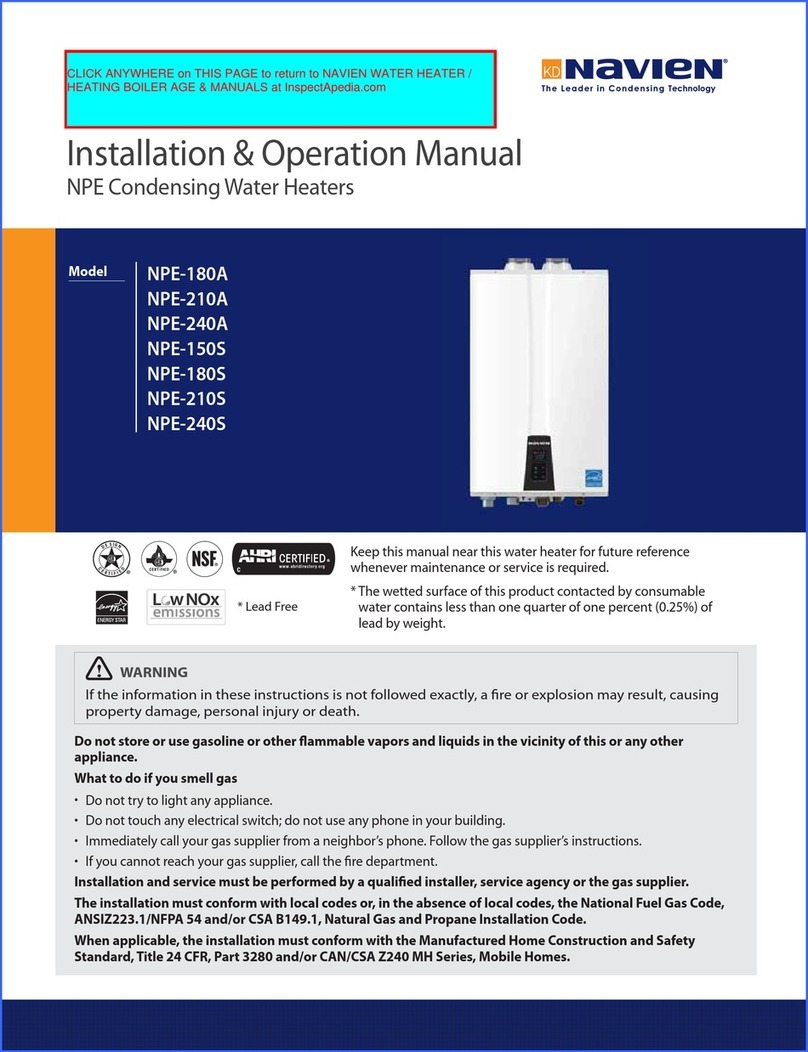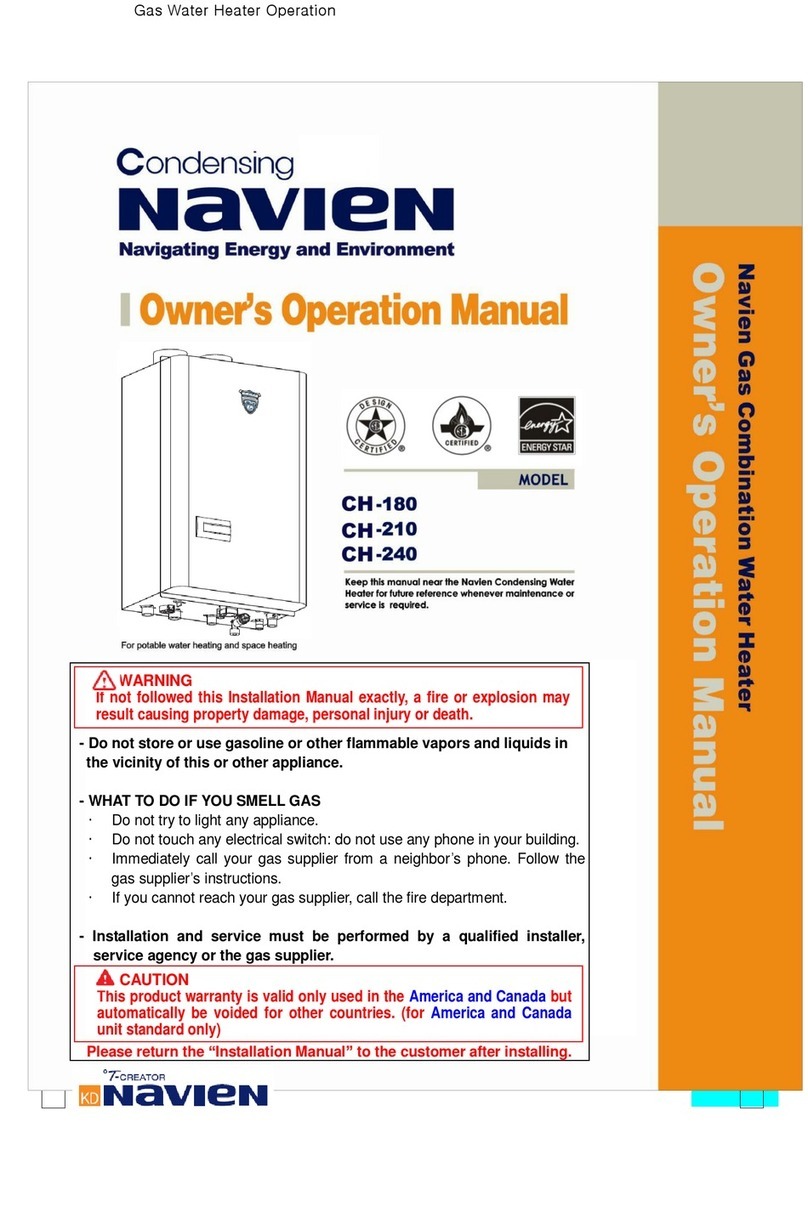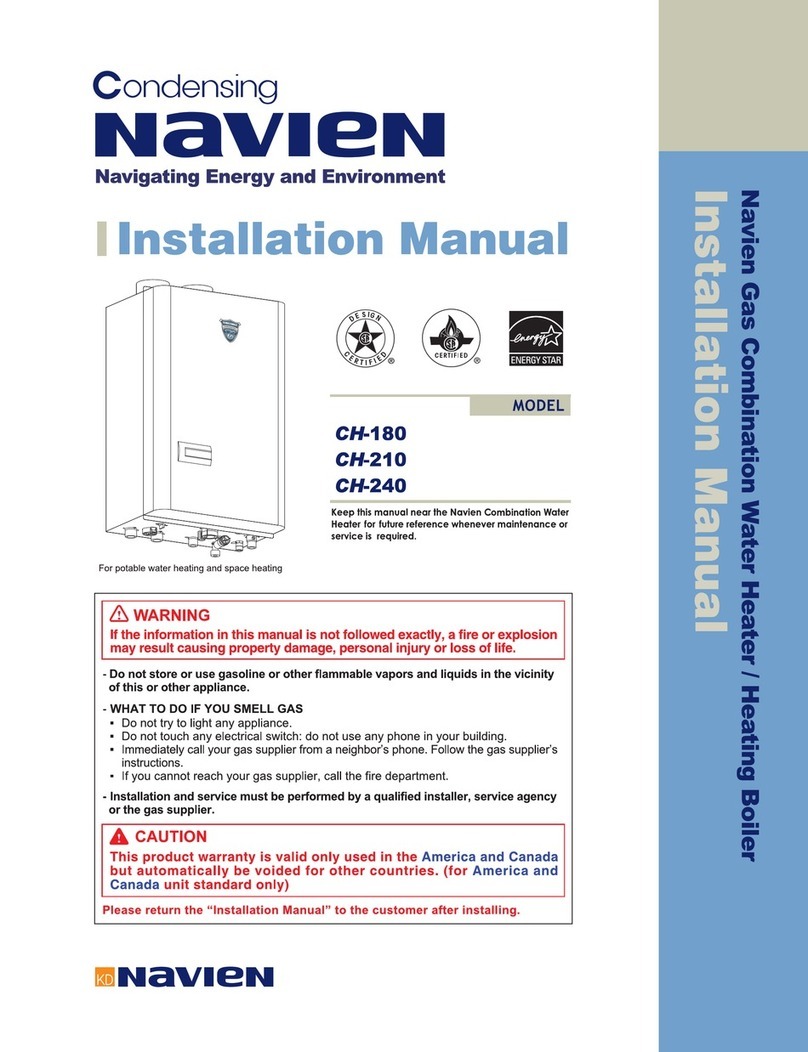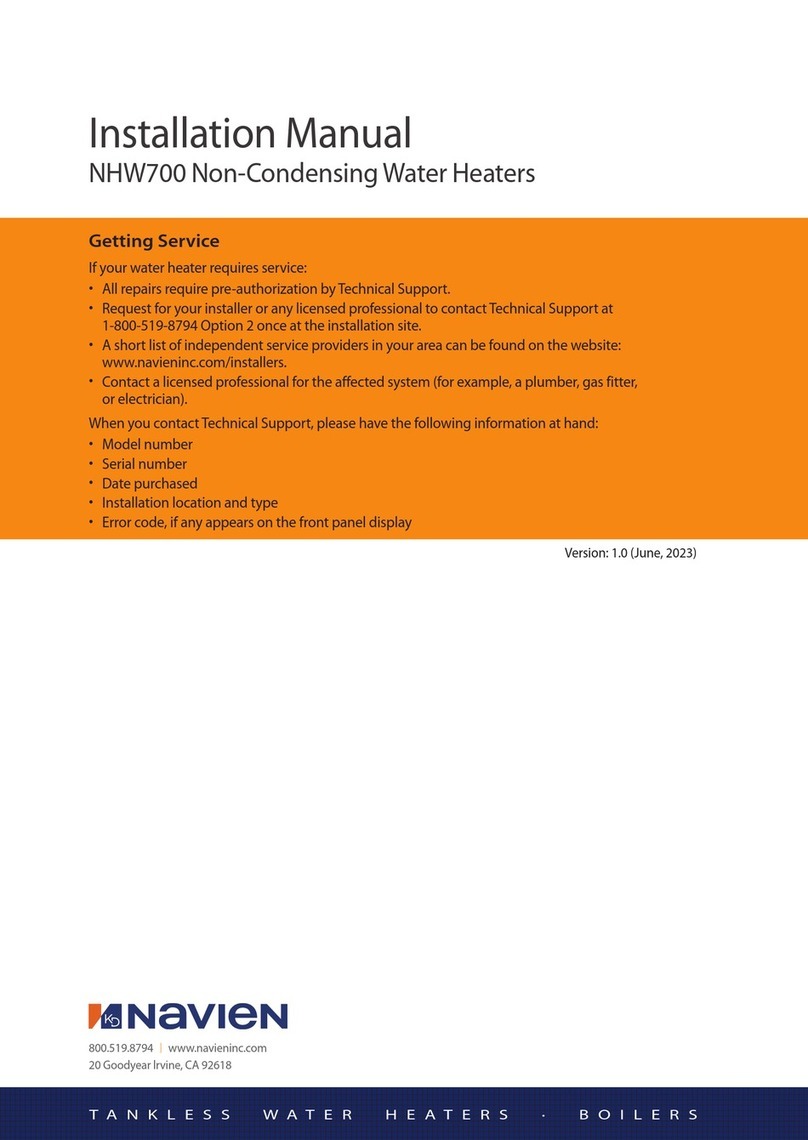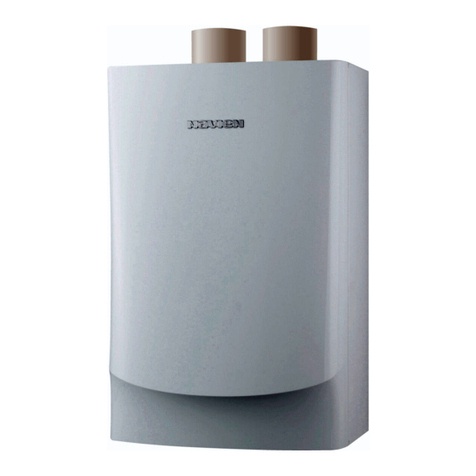5Safety Information
When servicing the controls, label all
wires prior to disconnecting them.
Failure to do so may result in wiring
errors, which can lead to improper or
dangerous operation. Verify proper
operation after servicing.
Do not use unapproved replacement
or accessory parts.
Doing so may result in improper or
dangerous operation and will void the
manufacturer’s warranty.
Do not place anything in or around
the ue terminals, such as a clothes
line, that could obstruct the air ow
in or out of the water heater.
This water heater has been approved
for use in the UK and Ireland only.
Using the water heater in any other
country will void the manufacturer’s
warranty.
General Installation Guidelines
Building regulations and Benchmark
Building regulations require that installation should comply
with manufacture’s instruction. It is therefore important that the
commissioning checklist is completed by the installer.
Benchmark places responsibilities on
both manufacturers and installers.
The purpose is to ensure that customers are provided with
the correct equipment for their needs, that it is installed,
commissioned and serviced in accordance with the
manufacturer’s instructions by competent persons and
that it meets the requirements of the appropriate Building
Regulations. The Benchmark Checklist can be used to
demonstrate compliance with Building Regulations and
should be provided to the customer for future reference.
Installers are required to carry out installation, commissioning
and servicing work in accordance with the Benchmark Code
of Practice which is available from the Heating and Hotwater
Industry Council who manage and promote the Scheme. Visit
www.centralheating.co.uk for more information.
Gas safety regulations
The water heater must be installed by an installer authorized by
the Ministry of Industry and it must be started up by an Ocial
Technical Assistance Service authorized by Navien.
All Gas Safe registered engineers carry an ID card with their
license number and a photograph. You can check your engineer
is registered by telephoning 0800 408 5500 or online at www.
gassaferegister.co.uk.
In GB, this must be carried out by a competent person* as stated
in the Gas Safety (Installation & Use) Regulations (as may be
amended from time to time).
In IE, this must be carried out by a competent person as stated
in I.S813 “Domestic Gas Installations”.
The manufacturer will not accept any liability whatsoever for
loss, damage or injury arising as a result of failure to observe
the instructions for use, maintenance and installation of the
appliance.
*A competent person: One who works for a Gas Safe registered company
and holds current certicates in the relevant ACSmodules.
Installation Instructions
Current legislation must be taken into account on installing
this appliance, and it must be installed in a place with suitable
ventilation.
In GB, the installation must be carried out by a Gas Safe
Registered installer. It must be carried out in accordance with
the current and relevant requirements of legislation and
guidance including:
The Gas Safety (Installation & Use) Regulations
The appropriate Building Regulations either The Building
Regulations, The Building Regulations (Scotland), The Building
Regulations (Northern Ireland)
Water Fittings Regulation and local byelaws
I.E.E. Wiring Regulations
Health and Safety Regulations
Where no specic instructions are given, reference should be
made to the relevant British Standard Code of Practice.
Standard Description
BS5440: Part 1 Flues and ventilation: Flues
BS5440: Part 2 Flues and ventilation: Air supply
BS5546 Installation of hot water supplies for
domestic purposes
BS6891 Installation of low pressure gas
BS6644 Installation of gas-red hot water boiler
BS6700 Installation of services supplying water for
domestic use
IGE/UP/10 Part
1 Edition 2
Installation of Gas appliances in
Commercial
